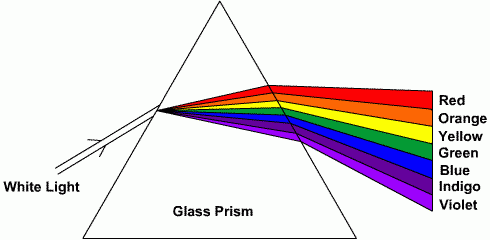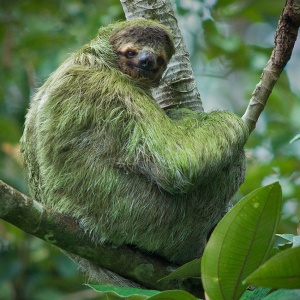I am sure you would immediately attack me with a ton of examples of animals which are green – from the majority of amphibians and reptiles, to the brightly colored in green tropical birds, insects, and some exotic fishes. But truth is that most of the animals who appear green to us, are not actually able to produce green pigments, but rather different structures in their skin, fur or feathers reflect the light in a way that it looks green to us.

Much like many other objects – most obviously prisms, the cover of an animal absorbs certain wavelengths and bends the light in ways when only one (or a combination of several) color is bounced off the surface and is available for our eyes to see – and this is why objects look like they have a given color. So simply put the perception of color is not a property of an object but rather of the organism looking at this object and its abilities to see different wavelengths as different colors.
But that still doesn’t justify my statement that there are no green animals. In truth, very few animals are able to produce truly green pigments as such – it seems this is a trick reserved for the plants only. The few pigments known in the animal kingdom responsible for truly green color are usually found in marine animals – the so called carotenoproteins, and even then they usually get them from plants – either their symbionts or ones they have ingested and the pigment simply accumulates on their surface. The most common such protein for green color is the ovoverdin.
One of the most fascinating ways animals trick us to believe they are green, are the ones employed by butterflies. They use the so called structural colouration – when indeed structures on the surface of the wings bend light in a way that it comes out as different colors. In butterflies, like the Emerald swallowtail, part of the structures refract the light in blue, and the rest – in yellow, and thus our eye is mischievously tricked into thinking that the butterfly is emerald green.
Similar mechanism of “coloration” is used by many other species – peacocks (whose feathers are truly brown), the blue-yellow macaws, some squids and bugs.
The only mammal which appears to be green (and also fails to be naturally green) is the sloth. Mammals, of all animals, are the least creative when it comes to pigmentation and the use of tricks to color themselves. The only pigments they can really produce give out red to brown color and in different combinations or amounts attribute for the different colors of mammals. The sloth gets its green color with age – its fur is extremely coarse and eventually with age it begins to crack. These cracks turn out to be the best habitat for green algae, which are the real green deal.

So next time you see a green animal think again if what you are seeing is not yet another trick of nature, just to make life a bit more colorful and interesting!

Great article. You inspired me too look into frog colouring. I was amazed to find that they refract blue light; like some butterflies do, but when the light is reflected away from the frog again it passes through a yellow pigment that only lets the green light back out. Fascinating!
Thank you – indeed, I was so surprised by it myself that I HAD to read up on it and afterwards share here. Nature can be such a trickster! 😛